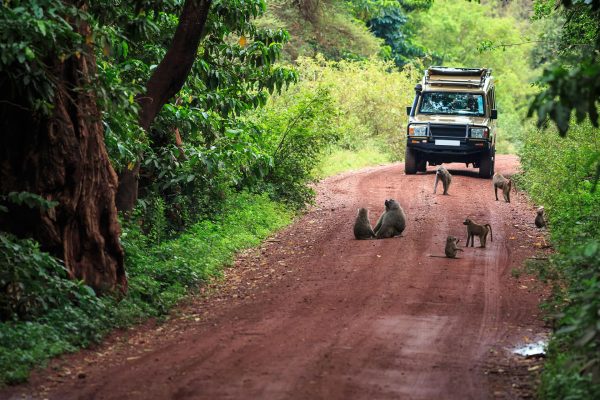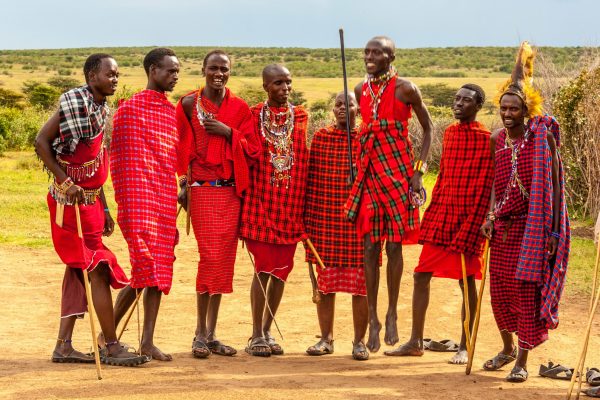Tanzania’s Northern Circuit Safaris, Map, Regions, Things to Do
The Tanzania’s Northern Circuit is renowned for its prominent national parks in Tanzania. The itinerary encompasses Arusha National Park, Tarangire, Lake Manyara, Serengeti, and the Ngorongoro Conservation Area, all of which may be explored within a 7 to 8-day safari. Additional protected sites on the northern circuit include Lake Eyasi and Lake Natron, where we encounter the Hadzabe, Datoga, and Maasai tribes. The distances between the parks enable visits to all without requiring a full day for transfers; the intervening areas consist of protected regions where wildlife can be observed or local villages can be explored. The northern circuit offers Kilimanjaro trekking adventures.
What is Northern Circuit Safari Tanzania?
The Northern Circuit is the most famous Northern Circuit Safari Tanzania and the world at large. The Northern Circuit Safari Tanzania stretches in the northern part of the country and encounters the most famous National Parks in Tanzania such as the Serengeti, Ngorongoro Crater, Kilimanjaro National Park, Lake Manyara, Tarangire National Park, Arusha National Park, Olduvai Gorge, and Mkomazi National Park. The Northern safaris circuit Tanzania holds large numbers of wildlife and all other forms of attractions such as the volcanoes, calderas, and many more to mention but a few.
Best Tanzania’s Northern Circuit Safaris
The Tanzania’s Northern Circuit Safaris are captivating, complemented by our courteous and hospitable crews offering luxurious amenities. Exclusive fireside dinners, thrilling walking excursions with expert guides, and exhilarating hot-air balloon rides are plenty. The excursions are ideal for newlyweds desiring romance beneath the African skies. Families derive pleasure from customised experiences that strengthen familial connections in the presence of animal displays. Life’s significant celebrations can be cherished, and other memories can be created. These excursions guarantee indelible experiences, spanning the Serengeti’s plains to the depths of Ngorongoro and beyond.
Allow Kabira Safaris Africa to orchestrate your ideal safari experiences in northern Tanzania, customised to your specifications. Our team of specialists will offer tailored guidance and assistance during your trip-planning process. Here are few exemplary instances to inspire and initiate your efforts.
Northern vs Southern Safari Circuits
A comprehensive safari in Tanzania, encompassing all major national parks and cities, may need up to four weeks, given the country’s overall land area of 947,300 km² (365,754 mi²) and a coastline extending 1,424 km (884.8 mi). Given that few individuals possess the time and financial resources for such an extensive excursion, the majority choose to partake in a safari experience in either the northern or southern circuit of Tanzania. This analysis examines the distinctions between the two courses, enabling you to determine which one aligns with your preferences; nevertheless, be forewarned that you may like to pursue both options.
Tanzania Northern Circuit Itinerary
A standard itinerary for Tanzania’s Northern Circuit encompasses visits to Tarangire, Lake Manyara, Serengeti, and Ngorongoro Crater, typically spanning 7 to 10+ days. The expedition typically commences in Arusha, with flights to and from Kilimanjaro International Airport (JRO). Typical activities involve game drives, wildlife viewing, and cultural experiences. A safari in northern Tanzania ought to be included on everyone’s travel bucket list. The Great Migration in Serengeti National Park is one of the most remarkable animal phenomena globally, while safari on the Ngorongoro Crater bottom of the extinct volcano offers an unparalleled game viewing experience. Kilimanjaro, the highest freestanding mountain globally, dominates the landscape and is probably Africa’s most formidable task.
The Maasai
The Maasai, a remarkable ethnic group predominantly located in Kenya and Tanzania, have fascinated the globe with their dynamic culture, profound traditions, and unique lifestyle. The history of the Maasai extends back centuries, originating in the Nile Valley of Sudan. These tenacious pastoralists depend on animals for their livelihood, representing riches, status, and sustenance. Their civilisation is structured around age sets, each assigned distinct roles. Maasai warriors, referred to as morans, historically safeguarded their communities and herds with valour and expertise, opposing colonial forces.
Tanzania Northern Circuit Regions.
Where To Go In The Northern Circuit
The northern circuit of Tanzania is definitely the most renowned of the four cardinal directions in the country. The northern circuit is replete with natural and cultural marvels, predominantly shaped by the Great Rift Valley in northern Tanzania and southern Kenya.
The north is home to renowned sights including the expansive Serengeti National Park, the distinguished Ngorongoro Crater, and Africa’s tallest peak, Mount Kilimanjaro. Nevertheless, the northern route presents a plethora of remarkable encounters at every turn.
The Northern Circuit encompasses Tanzania’s most renowned parks, including the Serengeti, Ngorongoro Crater, Kilimanjaro National Park, Lake Manyara, Tarangire National Park, Arusha National Park, Olduvai Gorge, and Mkomazi National Park.
1. Serengeti National Park
Serengeti National Park, a World Heritage Site and one of the most renowned wildlife conservation regions globally, is an essential destination on any Tanzanian safari. Covering an expanse of 14,763 square kilometres, the park is aptly called after the Maasai term for “endless plains.” Here, you will get the opportunity to encounter the “Big Five” (Lions, Elephants, Rhinos, Leopards, and Cape Buffalo) as well as numerous other iconic and lesser-known animals. Due to the extensive landscape, climatic conditions, and migratory behaviours of countless species, numerous animals in the Serengeti are perpetually in motion. This results in an exhilarating gaming drive!
The park’s terrain encompasses extensive grasslands of varying lengths, open plains in the south, acacia savanna in the central region, hilly and densely wooded areas in the north, and vast woodlands and black clay plains, characterised by the central mountain ranges in the western corridor. The plains have rocky outcrops termed “kopjes,” and various rivers traverse the park, particularly the Seronera River in the middle region, the Grumeti River in the Western Corridor, and the Mara River in the north. The diversity of sceneries perpetually evokes admiration.
The avifauna of the Serengeti is as remarkable and diverse as its larger fauna, encompassing many species of eagles and vultures, ostriches, secretary birds, kori bustards, hornbills, guinea fowl, in addition to numerous smaller birds. The park has recorded about 500 bird species, including dozens that migrate from Europe and Asia during the winter months—truly an exceptional location for birdwatching.
2. Ngorongoro Conservation Area
The Ngorongoro Crater is a unique protected region where the Maasai people and wildlife coexist harmoniously. A substantial, enduring aggregation of wild animals resides within the vast and pristine crater. Ngorongoro is classified as a caldera, namely the largest ancient buried crater globally. Estimated to be three million years old, the former volcanic Ngorongoro is today regarded as one of “Africa’s eighty wonders.” We consider it to be one of the world’s most significant treasures.
The Crater floor, often referred to as the “Garden of Eden,” serves as a natural sanctuary for myriad animals, including wildebeest, over two hundred lion prides, zebras, elephants, hippos, hyenas, Thomson’s gazelles, African buffalo, crocodiles, ostriches, and numerous avian species, making it one of the premier locations to observe the endangered rhinoceros. A visit to Ngorongoro is essential and an excellent addition to a cultural tour of a Maasai settlement.
3. Lake Manyara National Park
Lake Manyara National Park is a captivating and remarkably diverse area, encompassing 325 square kilometres (125 square miles). The park is renowned for its dramatic topography, swiftly transitioning from a shallow soda lake populated by flamingos to acacia woodlands that shelter substantial troops of baboons, herds of giraffes and elephants, and a birdwatching haven for over 400 avian species, culminating in the Great Rift Valley escarpment, noted for its iconic tree-climbing lions. The park features an underground water forest.
Lake Manyara serves as an excellent waypoint en route to the Serengeti or as a delightful brief safari for those with limited vacation time.
4. Tarangire National Park
Tarangire National Park, a visually captivating reserve, hosts an extraordinary variety of species and is notable for its high population of elephants. Tarangire is named after the Tarangire River, which traverses the centre of the Park from the southern region to the northwestern exit at Lake Burungi. Tarangire National Park constitutes a segment of the expansive Tarangire-Manyara Ecosystem, including around 35,000 km². This park, renowned for its stunning savannah landscapes and many Baobabs that provide habitat for various bird and bat species, offers a really breathtaking experience.
Tarangire is situated in an arid zone that fosters the development of a woody savannah predominantly characterised by Acacia, Terminalia, Combretum, and Commiphora species. The area’s most notable vegetation types comprise riverine woodlands, Acacia tortilis parkland, wetlands and seasonal floodplains, acacia-commiphora woodlands, riverine grasslands, combretum-dalbergia woodlands, acacia drepanolobium woodlands, rocky hilltop (kopjes) vegetation, deep gully vegetation, and grasslands featuring scattered Baobab trees.The Park functions as a sanctuary during the dry season for a significant variety of migratory wildlife within the Tarangire-Maasai Steppe environment. The park is home to around 550 bird species. Abundant avian diversity is found in the open Acacia forests, within and adjacent to the Silale Swamp wetlands, and throughout the floodplains of the Tarangire River.
5. Arusha National Park
Arusha National Park is one of the smallest parks in Tanzania, encompassing about 137 square kilometers. It is located in close proximity to the city of Arusha, facilitating convenient access for a day or half-day excursion. The park encompasses various distinct micro-habitats, including a soda lake that supports numerous flamingos, a dense woodland habitat for black and white colobus monkeys, a plain reminiscent of the Serengeti, a crater, and the hikeable Mount Meru.
6. Mkomazi National Park
Mkomazi National Park, situated in North Eastern Tanzania, is adjacent to Tsavo West National Park in Kenya to the northeast and the Pare Mountains to the southwest. The park is situated near the southern boundary of the expansive Sahel region, bordered by the Sahara to the north and a more humid area (Sudan) to the south. Mkomazi Park, encompassing 3,701 km², is primarily arid and characterised chiefly by savanna vegetation. The environment is characterised by arid open savanna, predominantly including acacia-commiphora flora, which serves as an optimal home for elephants, African buffalo, lions, leopards, lesser kudu, fringe-eared oryx, aardwolves, and gerenuks. The park serves as a sanctuary for two critically endangered species, the black rhino and the African wild dog, both of which were successfully reintroduced in the 1990s. Over 390 avian species have been documented in Mkomazi, rendering it an optimal locale for ornithologists. Mkomazi was elevated to national park status in 2007.
7. Olduvai Gorge
Olduvai Gorge is the origin of humanity. In the early twentieth century, the renowned archaeologist Dr. Louis Leakey discovered some of the oldest fossil hominid bones here. This visit provides essential knowledge for the future in an increasingly heterogeneous society, addressing the ongoing quest for understanding our origins and identity, both culturally and biologically. Olduvai enhances our comprehension of evolutionary history, hence securing our future prosperity and welfare as a species.
The term Olduvai derives from a European misspelling of Oldupai, the accurate Maasai designation for this historically significant area, named for the profusion of wild sisal plants in the ravine. The gorge is a steep-sided canyon approximately 30 miles (48 km) in length and 295 feet (90 m) in depth. Paleoanthropologists assert that the layers exhibit a diverse fossil fauna spanning from 2,100,000 to 15,000 years ago. During your Northern Circuit tour, consider visiting this renowned archaeological site situated in the eastern Serengeti Plains and under the jurisdiction of the Ngorongoro Conservation Area Authority.
8. Mount Kilimanjaro
Embarking on the transformative journey to ascend Mount Kilimanjaro, the highest free-standing summit in Africa and the globe, offers an exhilarating range of choices. Seven unique routes—Marangu, Machame, Umbwe, Rongai, Shira, Lemosho, and the Northern Circuit—invite explorers. Each route presents distinct challenges, enhancing the appeal of the ascent. Success depends on skilled adaptation, a crucial element in attaining victory.
Accompanied by our climbing buddies, we have arrived with two preferred routes—Rongai and Lemosho—for optimal summit attainment. The Rongai Route, a single northern approach, reveals a serene environment abundant with antelope, elephants, buffalo, colobus monkeys, and other bird species. The Lemosho Route, being more recent and expansive, traverses many climatic zones, ensuring both achievement and visual magnificence. Select judiciously, taking into account individual preferences, fitness capabilities, financial limitations, and temporal restrictions. Select a route that facilitates progressive acclimatisation, circumvents crowds, and unveils the stunning panoramas of Kilimanjaro.
9. Rubondo Island National Park
Africa’s largest island national park is located in the southwestern region of Lake Victoria, a little flight from the Serengeti grasslands. This private haven, primarily enveloped by verdant equatorial rainforest, features only our Rubondo Island Camp on the island, awaiting exploration. The woodland harbours chimpanzees, elephants, sitatungas, and bushbucks, whereas giraffes roam the southern open plains. The lake is abundant with Nile Perch, providing exhilarating catch-and-release fishing and unforgettable boating expeditions.
Best Time For Northern Tanzania Safaris
The best timeframe for Northern Tanzania’s safari circuit is the dry season from June to October. While all renowned wildlife parks provide remarkable experiences, the breathtaking river crossings during the wildebeest migration in the northern Serengeti are the most coveted. Optimal game viewing possibilities arise as the dry season progresses, compelling species to congregate around the dwindling water sources. From December to March, migratory herds congregate in the southern plains for the calving season, presenting a remarkable spectacle accompanied by regular predatory activity.




